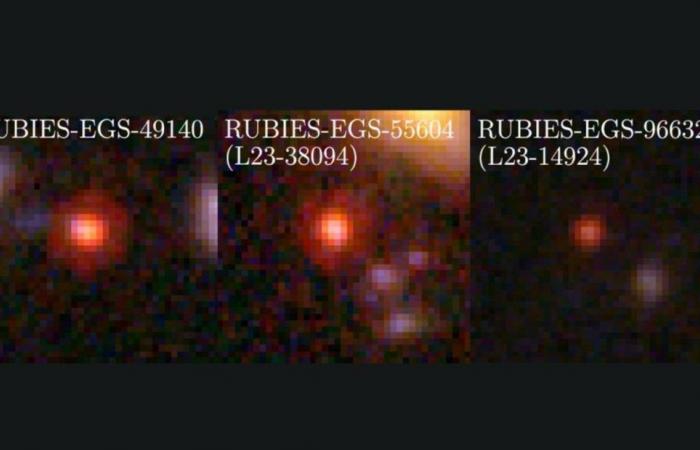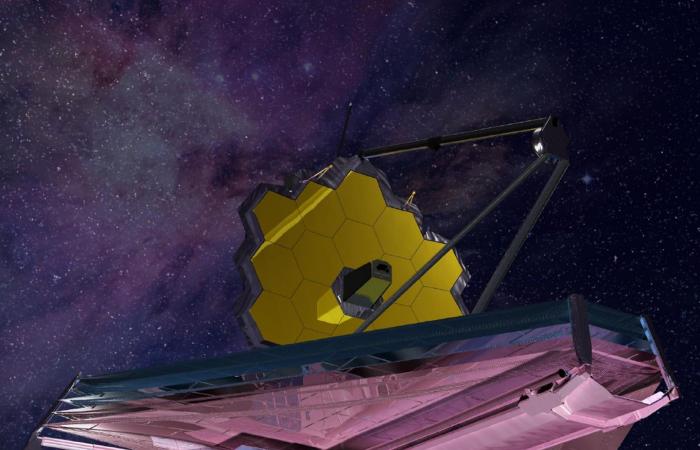The James Webb Space Telescope (JWST) confirmed that the luminous and very red objects detected in the early universe They question theories about the origins and evolution of galaxies and its supermassive black holes.
An international team, led by researchers at Pennsylvania State University, used JWST’s NIRSpec instrument as part of the RUBIES survey and identified three mysterious objects in the early universeabout 600-800 million years after the Big Bang. They announced the discovery on June 27 in the journal Astrophysical Journal Letters.
The team analyzed spectral measurements of the light emitted by these objects and found signals of old stars, much older than expected in a young universe. The researchers also discovered signs of supermassive black holes, estimating that they are between 100 and 1,000 times more massive than the Milky Way’s supermassive black hole.
READ MORE: Stunning: New NASA 3D image reveals secrets of the Pillars of Creation
Bingjie Wang, a postdoctoral researcher at Penn State and lead author of the paper, said: “We have confirmed that these objects appear to be packed with ancient stars, hundreds of millions of years old, in a universe that is only 600 to 800 million years old. “Surprisingly, these objects hold the record for the first signals of ancient starlight.”
The team first detected these massive objects in July 2022, when the initial Webb dataset was released. In a paper in Natureresearchers announced the existence of the objects and They suspected they were galaxies. They continued their analysis by taking spectra to better understand the actual distances of the objects and the sources of their immense light.
Joel Leja, assistant professor of astronomy and astrophysics at Penn State and co-author of both papers, explained: “It’s very confusing. This may fit awkwardly into our current model of the universe, But only if we conjure up some exotic and incredibly fast formation at the beginning of time.”
After a 30-year wait and after overcoming countless problems, the James Webb telescope, the largest and most powerful observation instrument ever built, will be launched this Friday into space, where it will investigate the origins of the universe and explore Earth-like exoplanets . (POT)
JWST, equipped with infrared detection instruments, allows scientists to look back in time approximately 13.5 billion years old. Differentiating between the types of objects that emitted the ancient light can be difficult. Wang noted that it is not yet clear what proportion of the observed light comes from each source, leaving room for interpretation of these intriguing objects.
Leja highlighted that the supermassive black holes in these objects produce many more ultraviolet photons than expected and they lack common features, such as hot dust and bright X-ray emission. “Usually, supermassive black holes are found paired with galaxies,” Leja said. “They grow up together and go through all their important life experiences together.”
Researchers were also puzzled by the incredibly small sizes of these systems, only a few hundred light-years across, approximately 1,000 times smaller than the Milky Way. Leja explained that if we were to compress the Milky Way to the size of these galaxies, the nearest star would be almost in our solar system and the supermassive black hole at the center of the Milky Way would be only about 26 light years from Earth.
James Webb Space Telescope opens a new era for astronomy
*The creation of this content was assisted by artificial intelligence. The information was provided and reviewed by a journalist to ensure accuracy. The content was not generated automatically.







